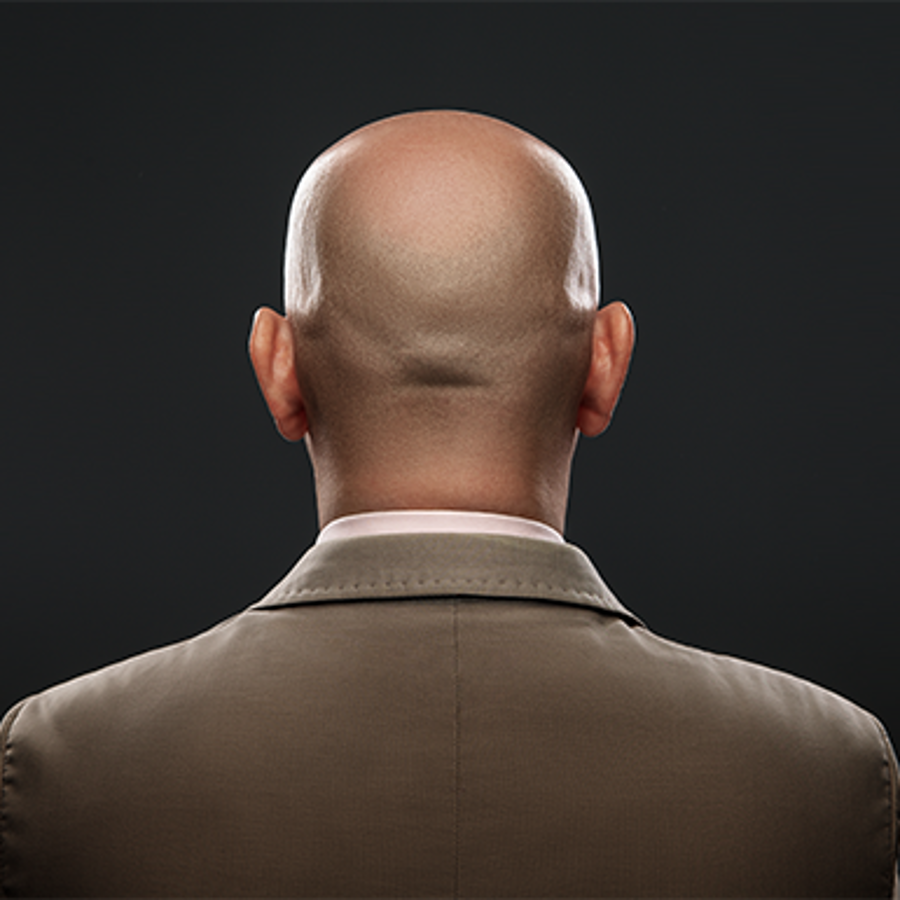
What are the chances I’ll go bald?
August 1, 2018

- Related Topics:
- Chromosomes,
- Complex traits,
- X linked inheritance
A high school student from Michigan asks:
"What if my father had the trait for baldness and my mother didn’t? What chance will I or my future offspring be carriers or have the trait?"
If your mom’s dad is bald, then there’s a high chance you’ll go bald in the future. If your father is bald as well, then those chances go up even more! But even if baldness doesn’t run in your mom’s family, it’s still possible you’ll go bald.
(I’m assuming that you’re male, since if you’re female then you don’t have to worry so much. Female hair thinning is a very different process that involves different genes.)
It’s difficult to predict with complete certainty whether your children will go bald, but we can make some guesses based on what your chances of baldness are.
Chromosomes and X-Linked Traits
Inside all our cells, our DNA is organized into long pieces called chromosomes. Each person has 46 chromosomes. Half come from mom and half come from dad.
Out of these 46 chromosomes, two determine whether you are biologically female or male. Because of this, they are called the “sex chromosomes.” Biological females have two X chromosomes while biological males have one X chromosome and one Y chromosome. The Y chromosome is unique to males.
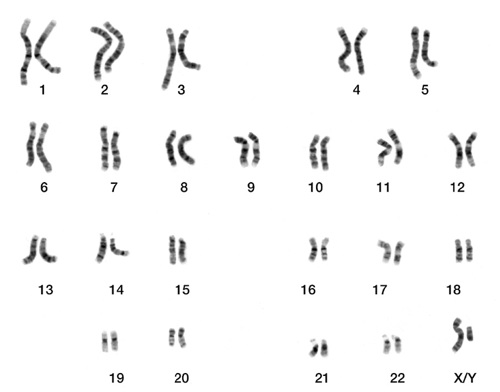
So what do these sex chromosomes have to do with male pattern baldness? Well, many studies have shown that a crucial baldness gene is found on the X chromosome. This means that a man’s chance of being bald is linked to the genes on his X chromosome! Because of this, baldness is an example of an X-linked trait.
Inheritance of X-Linked Traits
Daughters get one X chromosome from dad and the other from mom. Sons get their only X chromosome from mom and their only Y chromosome from dad.
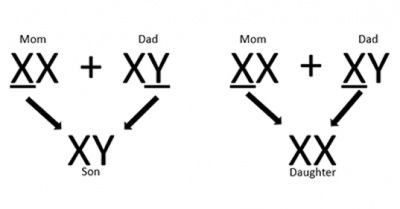
Let’s consider the possibility that your mom’s dad is bald. This means that on your grandfather’s only X chromosome, he most likely carries that crucial gene linked to male pattern baldness.
Your grandfather then passed his only X chromosome to your mom. She received another X chromosome from your grandmother. Now, we know for sure that at least one of your mom’s X chromosomes is carrying that crucial male pattern baldness gene.
When your mom and dad’s cells combined to make you, you had a 50% chance of getting that X-linked baldness gene from your mother.
Why is it a 50% chance? Remember, your mom has two X chromosomes (XX), and only one of those chromosomes is carrying the baldness gene. Each of her kids will get only one of those X chromosomes. So there’s a 50% chance you’ll receive the X chromosome with the baldness gene, and a 50% chance you’ll get the other X chromosome.
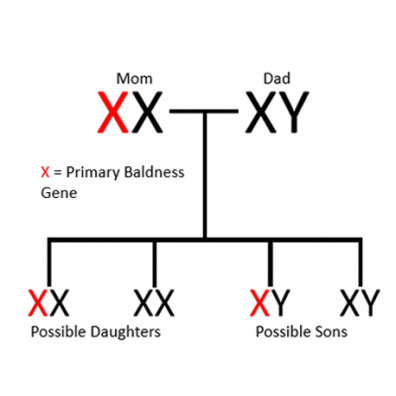
Now, let’s say you did receive the X chromosome with the baldness genes, and you eventually go bald. What will your children’s hair be like?
All your daughters will become carriers of the baldness trait, as they will receive one of their X chromosomes from you. They could pass this on to their kids, leaving you with bald grandchildren!
But your sons won’t inherit your X-chromosome. Their X-linked baldness gene will depend on their mother.
However, it’s actually even more complicated than this! It turns out that baldness isn’t completely determined just by what’s on your X chromosome.
The X chromosome isn’t the only one to blame
The crucial baldness gene found on the X chromosome only contributes in some part to baldness. Several other genes scattered across your other chromosomes can also turn you bald.
This means your dad can pass on some of those other baldness genes to you! You have a chance of going bald even if your mom doesn’t have baldness in her family.
Many of these other baldness genes are involved in making hair. Your hair grows out of tiny holes called “follicles”. And the cells that make the hair are called “hair follicle cells”.
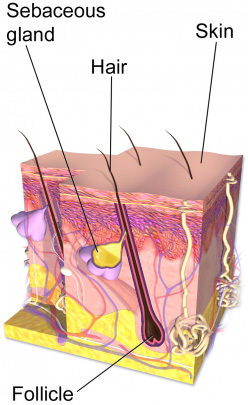
Hair follicle cells need to be maintained and if they aren’t, they’ll stop working. If your hair follicles stop working, no new hair will grow and your hair will start to thin out. This is why these genes are important as well.
And of course, all these genes work together. So, if you have the X-linked baldness gene, you’re likely to go bald. If you have one or more of these other baldness genes too, you’re even more likely to go bald!
This is why if your dad is bald, you may go bald as well. Your dad probably passed some of those non-X-linked baldness genes onto you.
We can now see that predicting baldness isn’t as simple as just carrying the X-linked baldness gene or not! Balding is a complex trait and scientists are still working to discover all the genes behind it.
And genes aren’t the whole story. Environmental effects, such as stress or your diet can also cause hair loss. When our bodies get too stressed, they release chemicals that can inhibit hair growth. And when you don’t get the proper nutrition you need, you won’t have enough protein needed to grow new hair follicles!
If you’re really worried about being bald, there are a few options. Treatments such as propecia and rogaine exist, which can help slow down hair loss. And if those fail, well, there’s always wigs or toupees!
Read More:
- Baldness isn't the only traist that is linked to the X chromosome! Check out these other articles on X linked traits, which include color blindness and muscular dystrophy.
- The genetics of baldness: More complex than you might think

Author: Harmony Folse
When this answer was published in 2018, Harmony was a Ph.D. candidate in the Department of Genetics, studying fruit fly reproductive development and gene expression in both Joseph Lipsick's and Margaret Fuller's laboratories. As of 2020, they are teaching Biology as an adjunct instructor at various community colleges in the Bay Area.
 Skip Navigation
Skip Navigation
